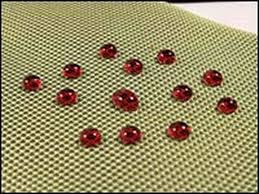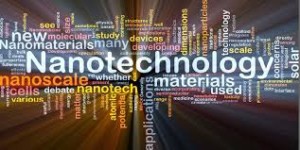In most simple words, Nanotechnology can be defined as the study and application of materials at the atomic and molecular level.Nanotechnology involves the ability to see and to control individual atoms and molecules, which are invisible to our naked eyes. Nano – scale materials were being used for many decades, but it is not that scientists are developing this interesting field of science, and realizing its potential.
To exploit the benefits of nanotechnology, scientists need to know how to accurately tailor the essential structures of materials at the nano scale to achieve specific properties, thus greatly extending the well – used toolkits of materials science.Materials can then be effectively made more stronger, lighter, more durable, and more reactive.
Nanotechlogy in our day to day life
We use many products and materials daily, which are crafted using nano science, and made up of nano materials. Below are few examples to justify this:
- Nanoscale additives are used in fabrics to make them resist wrinkling and staining.
- Nanoscale films on television and computer screens make them scratch resistant, dust repellent, water repellent and also prevent user’s eye from the radiating light.
- Zinc nanoparticles are used in sunscreens as they readily absorb the ultraviolet radiations of the sun.
- Modern cosmetics rely on nanotechnology as nanoscale particles provides more cleansing effect, and stay effective for a longer duration.
- Nano engineered materials are used in package food and preservative’s industry, as they can keep out moisture effectively, and prevent bacterial growth as well, and thus helps in keeping the food stuff and beverages fresh for longer time.
- Nano materials are also used in automotive industry to make stronger and lighter vehicles, having excellent properties.
- Nanotechnology has re – invented the electronics and communication fields, by bringing out alternatives which have proved more reliable and efficient than the older counterparts. Another feature is that size of equipments is reduced because of this.

Scope in Sustainable Energy
Meeting the energy demands of the rapidly increasing population, and the expanding industrial sector is becoming difficult as the natural resources and depleting at an alarming rate. We need a reliable alternative to the energy sources. Scientists are constantly trying to come up with cleaner energy alternatives, which will be more affordable and less toxic. Here is where the nano technology helps!
- Nanotechnology has helped in creative quick charging batteries which can last longer than the normal ones.
- Nanostructured materials are being used in chemical industries. More efficient catalysis is now possible, gases like hydrogen can be stored in nanoengineered substances, and many reactions are made feasible.
- Nano engineered materials have proven more efficient in absorbing solar rays, and are now used to manufacture solar panels, which are also cheaper.
- Nano science is also helping in increasing fuel efficiency, and improving the fuel quality through improved catalysis.
- Nano materials, which are more stronger and lighter are used to make wind mills, reaction containers, boilers, and other equipments required in the manufacturing and industrial units.
- Wires with less resistance and more conductivity are being tested by scientists, which are being developed by using nano science.
- Parts having less friction are also being developed, which find large applications in automated machines, and help in increasing machine efficiency, and reduces power loss in the form of heat.
 Reserchers are developing nano – structured filters that can remove virus cells from water and they are investigating a deionization method using nano – sized fiber electrodes to reduce the cost and energy requirements of removing salts from water. If they succeed then we would be able to use the ocean and sea water for drinking purpose as well!
Reserchers are developing nano – structured filters that can remove virus cells from water and they are investigating a deionization method using nano – sized fiber electrodes to reduce the cost and energy requirements of removing salts from water. If they succeed then we would be able to use the ocean and sea water for drinking purpose as well!- Nano materials are also used in industries and sewage units where specially engineered filters are deployed, which help in absorbing selective chemicals and wastes.
- Nanotechnology is used to make various types of sensors and detectors, which find a wide application in the robotics and electronics field.
Nanotechnology is also being used in the medical science, where it is more popularly termed as “biotechnology”. In medical field, nano science is helping in detection of various viruses, and is also providing nano – engineered gadgets which can help in their cure. Fabrication of nano tubes and wires has been made easier, and these tubes are being used extensively for health treatments. Optical tubes of very fine radius can provide the internal view of a human body and this helps in better diagnostics.
Concerns that bothers the engineers
Extensive use of nano materials in every field is raising a question about its safety. Some nano particles are found to have unintended health effects. For example, a certain material used in fabrics to terminate bad odour is release during wash, which then enter the streams through sewage lines, and poses threat to life of bacterias which are important for aquatic biological cycles. Some scientists have successfully conducted a research which shows that nanafibres can cause pulmonary diseases in the longer run, if inhaled in excess.
Experts say the governments should regulate the expansion of nanotechnology,which is the only way to exploit it benefits without impending a negative effect on environment as well as human health. There are many fields where experiments are going with nanomaterials so as to find better alternatives to the current technology, and certainly care must be taken with every advancement mankind makes!


Leave a Reply